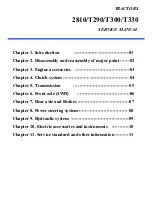
Maintenance, Service, and Repair
Batteries
Page 7
REMOVING INDUSTRIAL
BATTERY
6. Thoroughly clean the battery and battery
compartment. Refer to
Cleaning
in this section
for information regarding cleaning the batteries.
7. Using a hoist or forklift equipped with a proper
battery lifting device (see next page), slowly raise
the battery out of the vehicle.
Battery electrolyte will stain and corrode
most surfaces. Immediately and
thoroughly clean any surface outside of the
battery that the battery electrolyte comes
in contact with. Failure to clean may result
in property damage.
•
Explosive mixtures of Hydrogen gas are
present within battery cells at all times. Do
not work with or charge battery in an area
where open flames (including gas furnace
or water heater pilots), sparks, cigarettes,
or any other sources of combustion are
present. Always provide ample ventilation
in rooms where batteries are being
charged. Failure to do so may result in
severe bodily injury and/or property
damage.
•
A battery is a live electrical source. It
cannot be disconnected or neutralized. Do
not drop any tool or conductive object onto
the battery. A conductive object that comes
in contact with the battery terminals will
initiate a short circuit of the battery. This
could cause the battery to explode
resulting in severe bodily injury and/or
property damage.
•
Battery electrolyte is poisonous and
dangerous. It contains sulfuric acid. Avoid
contact with skin eyes or clothing. Wear
rubber gloves and safety glasses while
servicing batteries. DO NOT INGEST! This
may result in severe bodily injury.
1. Make sure the key-switch is in the “OFF”
position, then remove the key.
2. Place the forward-reverse switch in the
center “OFF” position.
3. Confirm the electric park brake is applied.
4. Place blocks under the front wheels to
prevent vehicle movement.
5. Disconnect the main positive and negative
cables at the batteries.
8. Inspect the battery compartment for signs of
corrosion.
9. If minimal signs of corrosion are seen, then the
damaged paint should be stripped off and the entire
battery compartment cleaned and repainted.
10. If there are excessive signs of corrosion, then it
may be necessary to replace some of the frame
members or completely rebuild the battery
compartment.
11. Inspect the battery cables and terminals. If any of
the cables or terminals show signs of corrosion,
then they must be repaired or replaced.
12. Install the battery in reverse order.
13. Remove the blocks from the wheels and test drive.
Typical battery lifting beam
Typical forklift attachment to use
Summary of Contents for TT-316-36
Page 2: ......
Page 6: ...TAYLOR DUNN...
Page 12: ...TAYLOR DUNN...
Page 28: ...TAYLOR DUNN...
Page 76: ...TAYLOR DUNN...
Page 82: ...TAYLOR DUNN...
Page 96: ...TAYLOR DUNN...
Page 99: ...Sevcon Troubleshooting Page 3 Electrical Troubleshooting Identifying Your Controller...
Page 120: ...TAYLOR DUNN...
Page 134: ...TAYLOR DUNN...
Page 138: ...Illustrated Parts Page 2 Front Fork...
Page 140: ...Illustrated Parts Page 4 Front Brakes...
Page 142: ...Illustrated Parts Page 6 Tilt Steering Column and Gear...
Page 146: ...Illustrated Parts Page 10 Transmission Differential Case Rear Axle...
Page 148: ...Illustrated Parts Page 12 Rear Brakes Master Cylinder 8 Brake Body...
Page 150: ...Illustrated Parts Page 14 Rear Suspension...
Page 152: ...Illustrated Parts Page 16 Motor...
Page 156: ...Illustrated Parts Page 20 Brake Lines...
Page 158: ...Illustrated Parts Page 22 Wheels and Tires Ref wheel hub 1 2 5 assembly 4 3 6 7 8 9 10...
Page 164: ...Illustrated Parts Page 28 Miscellaneous Frame and Body...
Page 168: ...Illustrated Parts Page 32 Decals...
Page 172: ...TAYLOR DUNN...











































